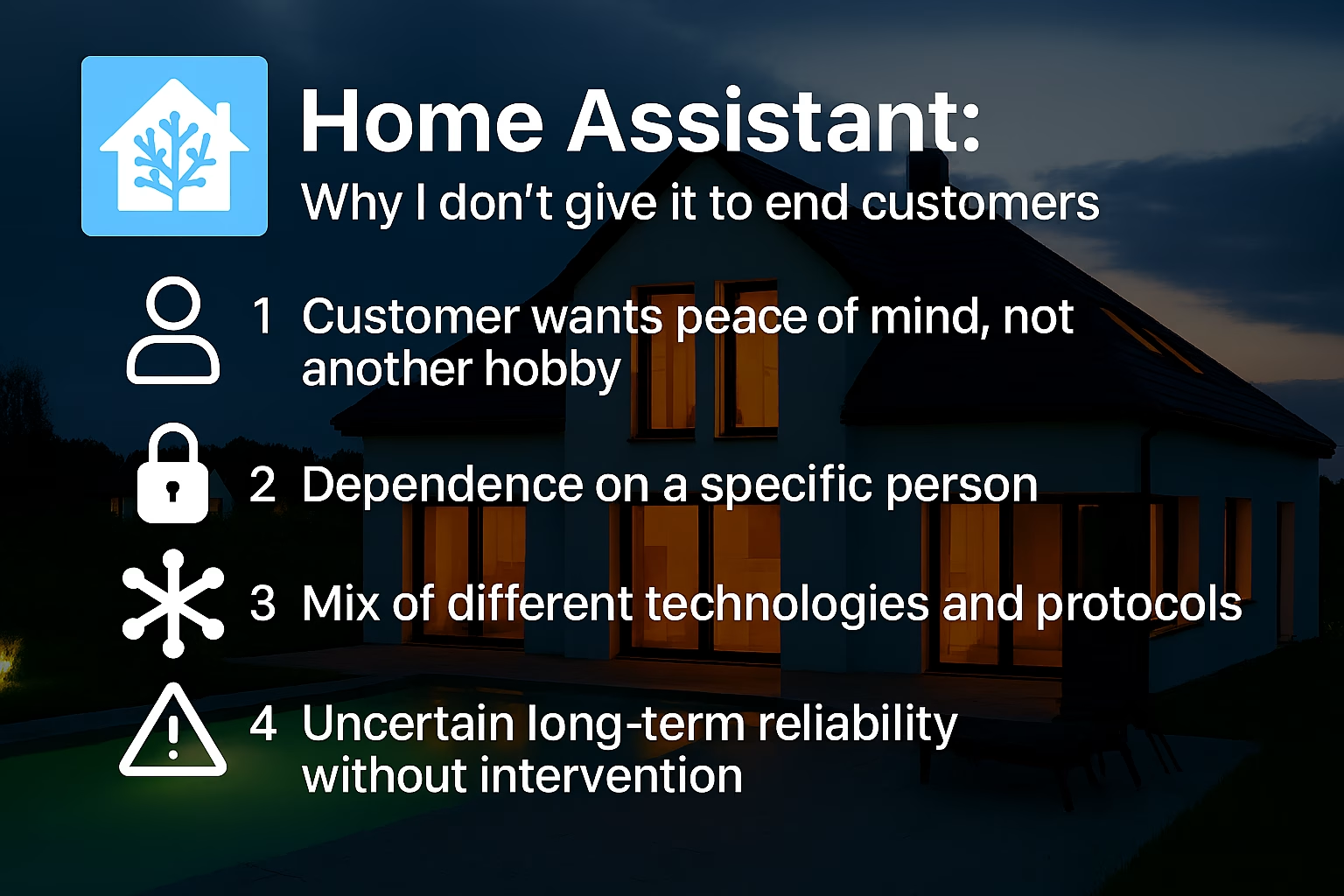Home Assistant is a phenomenon. An open platform, a huge community, thousands of integrations. A great tool for enthusiasts, developers, and testing new ideas.
But when it comes to a real project for an end customer, my answer is clear: no.
Why? Because a smart home is not a toy. It’s a system that needs to work reliably, long-term, and without stress. And this is exactly where the limitations of solutions like Home Assistant become clear.
Myth of a cheap solution
At first glance, it looks tempting: low cost, flexibility, openness.
But as the old saying goes: “Buy cheap, pay twice.”
Why? Because the initial savings often come back as higher costs for maintenance, service, and troubleshooting.
Why Home Assistant isn’t for the average customer
1. Customer wants peace of mind, not another hobby
Most people don’t want to deal with updates, configurations, or repairs. They just want their home to work.
2. Dependence on a specific person
Home Assistant is like a construction kit. Every system is unique – and when the creator disappears, the problem stays.
Professional systems have documentation, standards, and proper service support.
3. Community-driven development – both a strength and a weakness
Rapid progress, lots of integrations. But no official warranty, no accountability.
Updates can break features. The solution? Searching through forums.
4. Combination of different technologies and protocols
Wi-Fi, Zigbee, Bluetooth… Each device works differently.
When something goes wrong, finding the cause is like detective work.
5. Complexity for the average user
Home Assistant is powerful, but complex. It requires interventions that the average user neither wants nor knows how to do.
What’s the alternative?
For customers, I choose systems based on standards (e.g., KNX, Loxone, MyTEM…) that are:
- Reliable – works for years without intervention.
- Serviceable – anyone in the industry can take over.
- Easy for users – intuitive apps, no configuration edits.
My recommendation
Home Assistant is a great tool – for enthusiasts, developers, and testing.
But a smart home for a customer must be stable, predictable, and easy to maintain.
That’s why I choose professional solutions built on standards with clear support.
